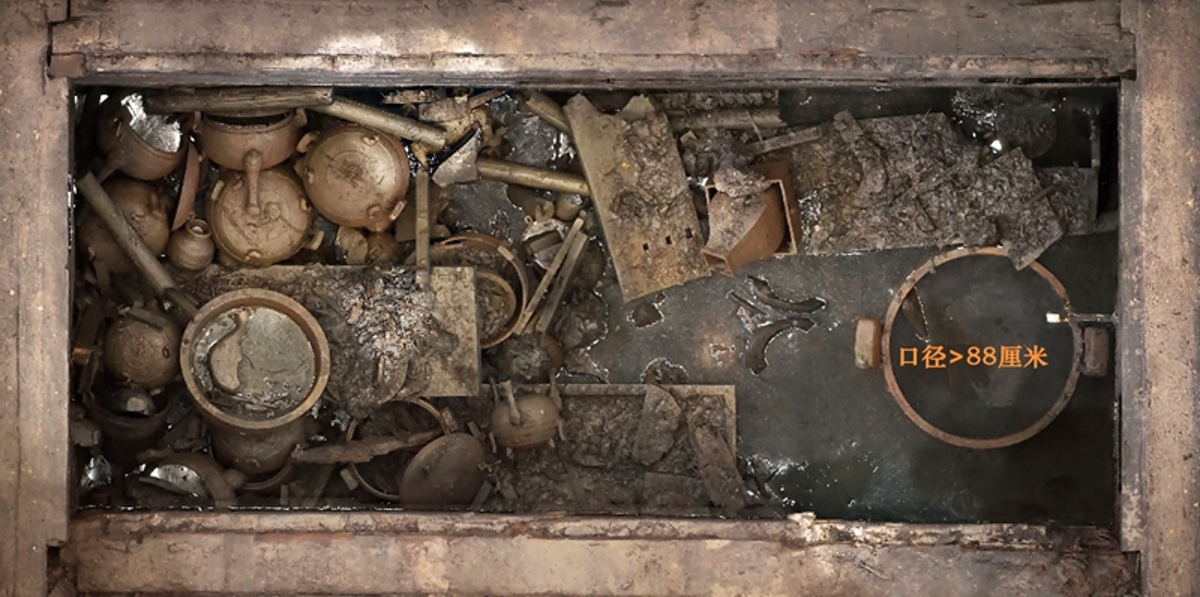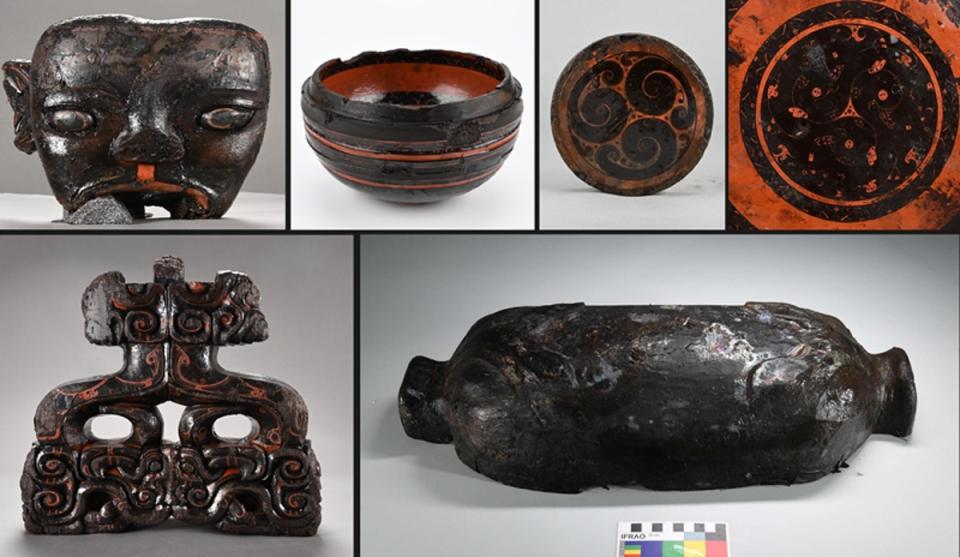Lavish 2,200-year-old tomb of Chinese emperor unearthed

Archaeologists have unearthed a luxurious 2,200-year-old tomb in eastern China that may belong to an emperor of the Chu state during a critical period in Chinese history.
Chu was among the seven Warring States, including Qin, Han, Wei, Zhao, Qi, and Yan, whose subsequent unification is regarded as the beginning of modern China.
At Wuwangdun, one of the largest-scale Chu state archaeological sites, researchers previously uncovered a cemetery spanning 1.5sqkm, with a chariot and sacrifice pits and a tomb, believed to be that of the cemetery’s owner.
Now, they have unearthed several artifacts, including burial chamber cover boards, bamboo mats on the boards and lacquer items.
So far over a 1,000 cultural relics have been uncovered from the tomb, dating to about 220 BC, including bronze ritual vessels, musical instruments, lacquerware, and plant remains.
A central coffin inscribed with more than 1,000 written characters was also unearthed.
With its grand scale, complex structure, and rich contents, researchers believe the tomb is the highest-level ancient tomb of the Chu state excavated to date, indicating it likely belonged to the state’s emperor.

“The findings can provide an overall picture of the political, economic, cultural, technological and social conditions of the Chu state in the Warring States period,” Gong Xicheng, an archaeologist part of the excavation told Chinese state news agency Xinhua.
“The findings can help us learn about the historical evolution as well as the formation of a unified nation and its culture,” he added.

To make the discovery while also preserving the unearthed remains archaeologists worked within a special low-oxygen laboratory built at the site.
Researchers also reportedly used advanced digital scanning, surveying and mapping techniques to create a 3D model of the tomb’s layer.
“The excavation and protection work at the Wuwangdun tomb will be carried out simultaneously, and various scientific and technological measures will be used so that the archaeological value of the tomb will be clearly and comprehensively presented,” Zhiguo Zhang, another researcher involved in the excavations, said.


